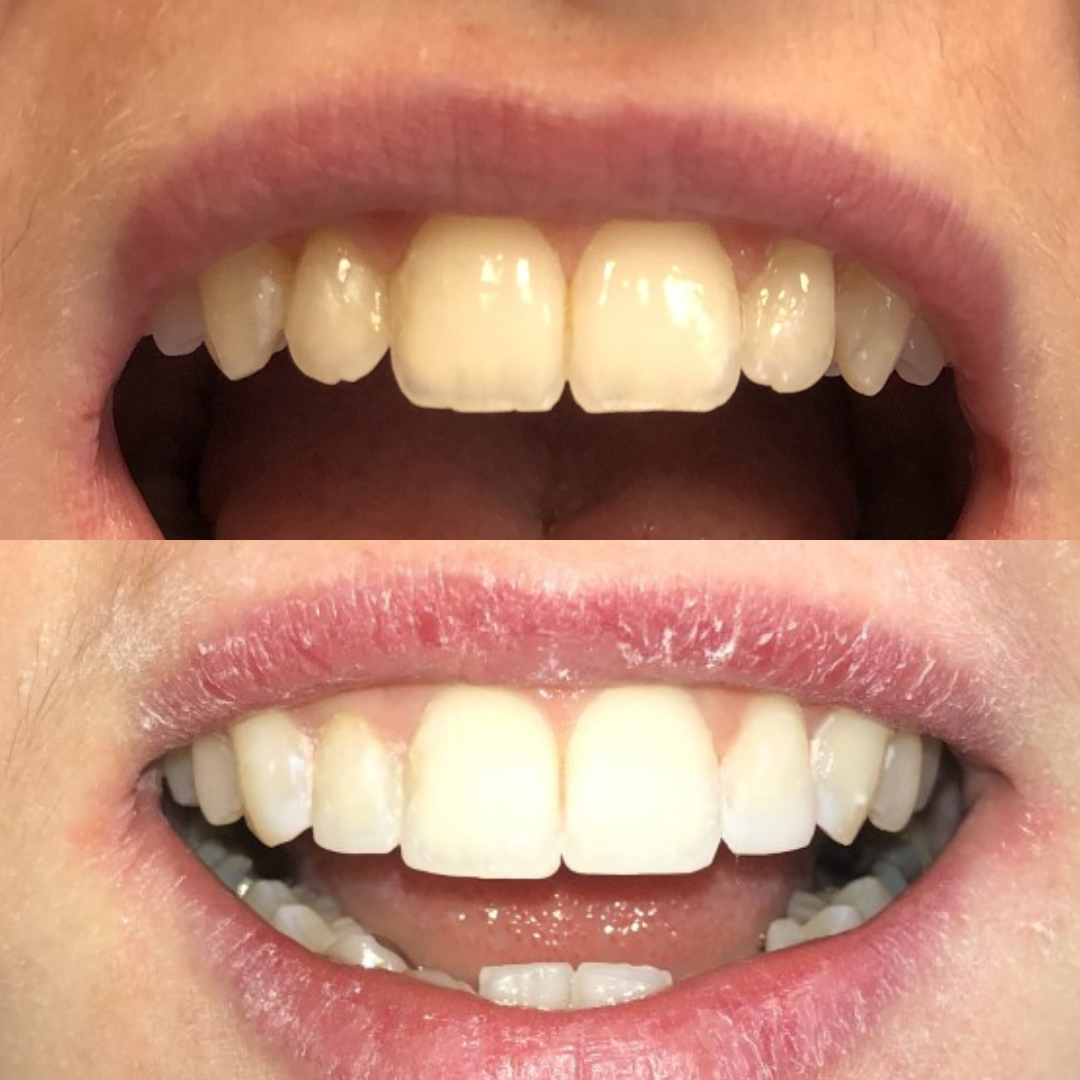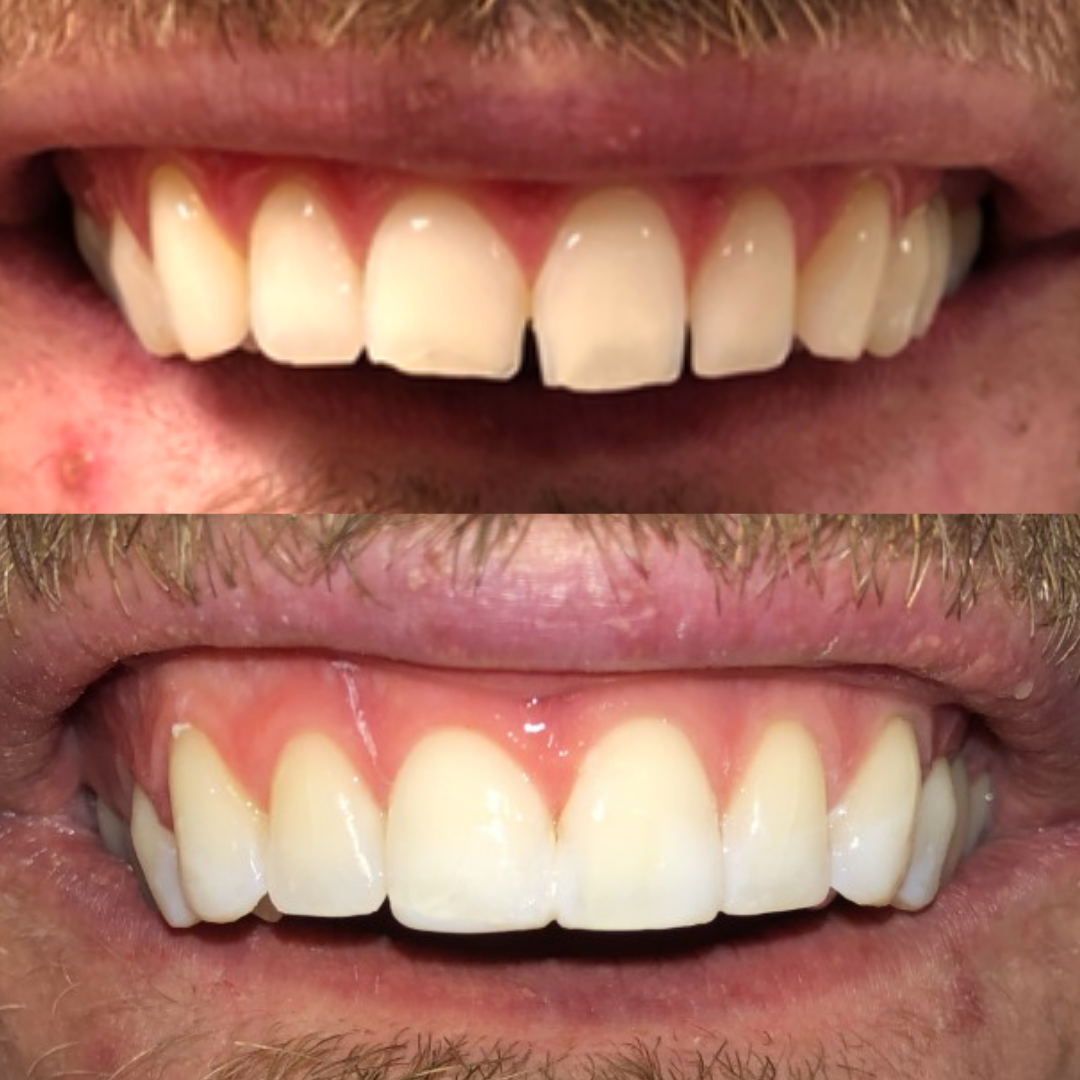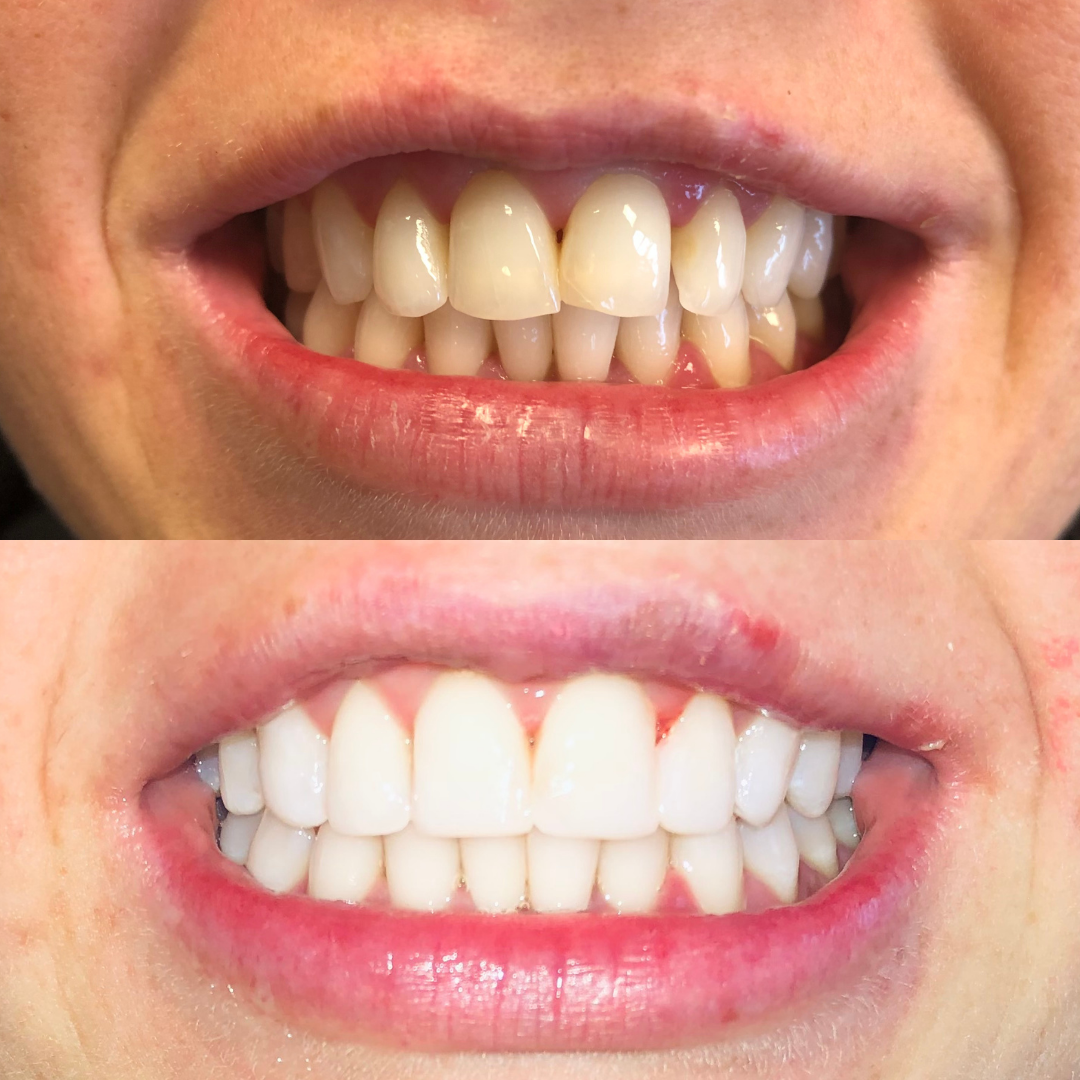Composite Bonding
Composite bonding is a treatment that has revolutionised modern dentistry. In recent years this treatment has become ever more popular amongst people of all ages. It is a treatment favoured by many celebrities and social media influencers. One advantage of this treatment modality over well known options such as dental veneers and crowns are their entirely reversible nature. They can be placed on a ‘virgin’ tooth without any preparation to the tooth whatsoever. This treatment is very versatile and can be used for numerous dental complaints and purposes. It can be long lasting and very affordable, therefore it’s widely available to many.
Results



What Is Composite Bonding Used For?
Composite bonding can be used for many different intents and purposes.
Bonding can be used simply to improve the look of your teeth. You may prefer a different shape or colour than you naturally have, and composite bonding can be used to achieve this change. If you have teeth which are not completely straight but you want to avoid expensive and uncomfortable orthodontic work/braces, composite bonding may be effective in making the teeth appear straighter. Gaps between teeth can be closed using expertly placed composite. The composite can be added to the sides of the teeth to widen them and therefore bring them together.
A detailed consultation process will be required to educate you in the importance of various factors in these cases; as the widening of teeth may need to be counteracted by increasing the tooth length and improving the shape. Dr Olivia is highly trained in preserving the correct anatomy of the tooth and will show you examples of how this should look. It can be used to build up teeth in cases of tooth wear, or to change the look of naturally small teeth. For tooth wear it can be extremely effective, treating this involves the consideration of many complex factors. Dr Olivia needs to determine the cause of the tooth wear in order to ensure the prevention of further wear. We need to ensure that your bite is appropriately managed, as this may have to be altered. Tooth wear can be unsightly, and with its aesthetic qualities and amazing likeness to natural teeth, composite can be placed so it is undetectable against your natural tooth.
Some people may suffer from genetic conditions affecting the size and shape of their teeth. Composite bonding may be used to restore teeth to the correct shape and a more appropriate size to suit your smile. Composite bonding can be used to mask tooth staining. It is important to determine why you have staining and ensure the health of your teeth, as dental decay or other dental diseases may cause discolouration, and any problem will need to be treated before cosmetic work is considered. In the event of tooth discolouration composite can be layered over the stain in order to disguise it. It can be placed either partially or entirely over your tooth surface if you wish to change the shade of the whole tooth without undergoing whitening procedures.
Consultation Process and Consent
When you come to the clinic the first thing we will do is undergo a consultation process with you. This is an important part of your treatment journey as this is when you’ll undergo a thorough dental assessment. Dr Olivia will listen to all your queries, concerns, and together you will formulate a treatment plan to encompass your desired outcome and how it can be achieved.
The first stage of this is information gathering; we will discuss your dental history, dietary habits and lifestyle factors which could affect the treatment. Dr Olivia will assess the health of your mouth and diagnose any dental problems. Photographs will be taken in order to document the process. These are part of your personal clinical records and will not be published without your full consent. If appropriate the dentist may apply composite to your teeth to give you an idea of what can be achieved. This is a trial and the composite will be removed before you leave. Once all your information has been gathered and the treatment options discussed, Dr Olivia will outline provisional treatment costs, time frames, and give you all the information you require to make an informed choice on whether you wish to proceed.
Preparing Your Tooth’s Surface for Composite Bonding
Your teeth will be reassessed to ensure full health. Once this is confirmed your teeth will be cleaned and dried, ready to start the bonding procedure.
Your teeth will be ‘isolated’ using either cotton wool rolls, or using a barrier method with a non latex type sheet. The teeth will be separated from one another to avoid any material getting stuck in between. A special gel will be applied to the tooth surface to ‘etch’ it. This gel prepares the surface for the next step where a dental bonding agent is applied. The bonding agent is the interface between the composite resin and the tooth surface, and acts as a ‘glue’ to keep the composite in place. The composite will then be applied in layers to the area of placement. Each layer will be cured with a blue light which hardens the material until it is ‘set’.
Once enough composite has been added, the dentist will shape and polish the result using a dental polishing drill. The bite will be checked for evenness and the result shown to you.
Composite Bonding Aftercare and Risks
Once you have completed your treatment Dr Olivia will advise you on recall and aftercare protocols.
You must follow a meticulous oral hygiene regime to ensure the health of your teeth and gums. This will be case specific but must include the brushing of your teeth twice daily, ideally with a fluoride containing toothpaste. You must ensure to keep in between your teeth clean, with the regular use of floss or interdental brushes. You must attend a dentist for regular check ups and hygiene maintenance. You do not need to specifically attend for checks on your bonding, but you may wish to do so to ensure all treated areas remain polished and strong.
If you grind your teeth this puts you more at risk of chipping and fractures. This will be discussed pre-operatively and you may be provided with a bite guard to wear at nighttime. This is because many people clench and grind their teeth while sleeping, which will put the composite as well as the natural teeth at risk of damage.
You don’t need to follow a specific diet plan after your treatment; but you must be mindful of eating habits. If you consume a lot of coloured food and drink such as coffee, tea, curry, red wine: you’ll put your teeth at risk of staining. A simple polish may correct this, but you should consider reducing intake of these.
You must NOT use your teeth to open packaging, bite your nails, or other similar habits. This will cause your composite to wear away and there may be a charge to correct this damage. Try your best to avoid biting directly into hard foods such as apples, tough breads, nuts. This may cause some composite to break away.
What Is The Cost of Composite Bonding?
The cost of composite bonding depends on the nature and complexity of the case, and will vary for each individual. Composite edge bonding is usually the simplest treatment, and prices begin at around £100 per tooth. The cost of your treatment could be more or it could be less depending on the dentist’s assessment of your case.
Composite veneers can be placed directly by Dr Olivia whilst you attend a single visit. This starts from £150 per tooth. Composite veneers can be fabricated in a laboratory setting once Dr Olivia has prepared the area. If this is your preference there will be an excess lab fee to consider. This treatment starts from £250 per tooth. There will be a maintenance fee if you require further intervention after your case is completed. This will be explained to you depending on what excess treatment you require. This is at the dentist’s discretion depending on the nature of the follow up appointment. Prices are subject to change and the cost will be communicated to you before any treatment is undertaken.